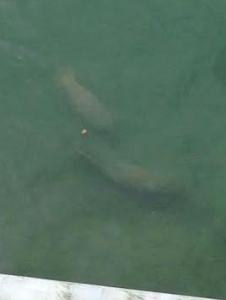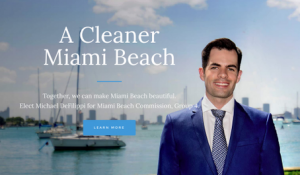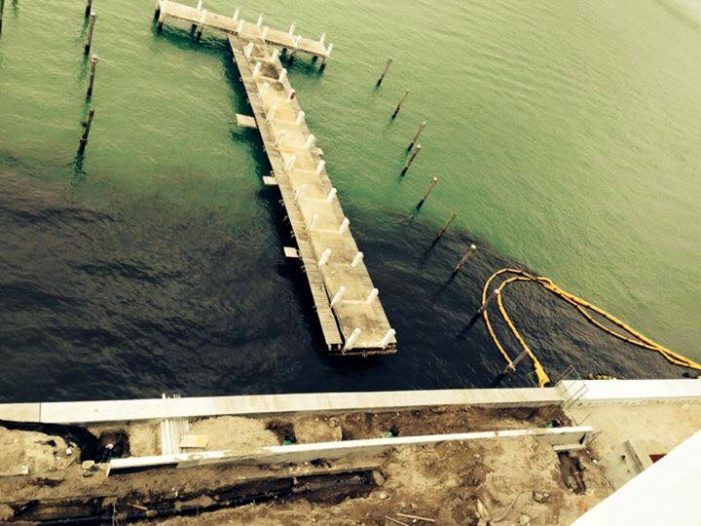(Continued from previous page)
perceptible color difference to the water coming out of the valve,” he wrote the mayor and commissioners.
“The pressure and gas bubbles do cause sediment to rise and form temporary clouds in the water. From a distance, they could look like something worse. As soon as the pumping stops (when there is no stormwater in the well), the sediment settles and the water is clear again. I observed that numerous times in the course of the hour I was there,” Morales wrote, adding that there were two divers from Public Works in the water making the same observations.

“There were no significant pieces of debris that came out. No bottles, no cans or other debris,” he wrote. “The vortex is clearly effective in catching this stuff. In fact, to evidence the extent to which the vortex actually captures such debris (another advantage of our pump system compared to gravity), we will be videoing the next cleaning of the 10th street vortex and using that in a community outreach to educate residents on this issue.”
Maybe residents ought to see the videos posted on DeFilippi’s Clean Up Miami Beach page, too. Those show a clearly expanding cloudy discharge and sludge and, in one, what looks like an oily rim.
Morales said the only two things that did get through the grates and the vortex “were some small leaves and shreds of leaves, and a few small plastic bags or shreds of bags.” He said he asked staff and the contractor to see if they can prevent those plastic shreds from getting through.
“We will continue to monitor the outflow and conduct testing of water quality. Please let the residents know that we are very concerned about the ecology and will work to make sure that our efforts to fight the rising tide have as minimal an impact as possible on that ecology,” Morales wrote to end the memo.
DeFilippi — who is making environmental responsibility  a central point of his campaign for one of the three open seats on the commission — is concerned that the city is not taking this seriously enough and that Morales is trying to minimize the situation.
a central point of his campaign for one of the three open seats on the commission — is concerned that the city is not taking this seriously enough and that Morales is trying to minimize the situation.
“Any pollution/trash being discharged due to poor filtering is unacceptable,” DeFilippi posted on Twitter Tuesday afternoon.
“What’s the point of addressing sea level rise if you’re just going to turn around and do this to the Bay,” he told Ladra hours earlier.
The city has apparently dismissed concerns before.
Florida International University geologist Henry O. Briceno did a study last October that show the high velocity pumpin stations flood Biscayne Bay with pollutants such as phosphorus and nitrogen that cause toxic algae blooms and kill the grassy floor that is home to other marine life.
“You have a dry city. A very safe city,” thanks to the pumping, Briceno told the Miami Herald in January. “But you won’t have any beaches to bring tourists.”
His warnings did not seem to cause much concern at City Hall back then.
“It doesn’t really prove anything other than this is something we need to look at,” Miami Beach City Engineer Bruce Mowry told the Herald.
So let’s everybody look at it.
Pages: 1 2

